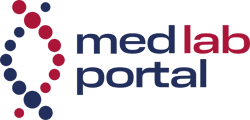Global Harmonization of Reference Intervals: Advances in Laboratory Medicine
At the EuroMedLab Conference 2025 in Brussels, experts from the International Federation of Clinical Chemistry and Laboratory Medicine (IFCC) discussed the harmonization of reference intervals (RI) and clinical decision limits (CDL). New digital and statistical methods are intended to enable standardized, sustainable values, as DGKL Presidium member Thomas Streichert describes in the journal Trillium Diagnostik in the journal Trillium Diagnostik in the journal “Reference Intervals and Clinical Decision Limits: On the Way to Global Harmonization” (DOI: 10.47184/td.2025.03.04). According to Streichert, international projects in Germany, Canada and Australia show that uniform reference boundaries across laboratories are possible, which makes laboratory medicine more precise and evidence-based.
Reference intervals and decision limits are essential for interpreting laboratory findings. However, different thresholds between laboratories, even with the same analytical systems, make comparability difficult, especially in electronic patient records. Indirect methods used routinely collected data from laboratory information systems and statistical models to estimate reference limits even from mixed populations. According to the paper, comparative studies confirm the reliability of these approaches for numerous analytes.
In Germany, the PEDREF network, supported by the German Society for Clinical Chemistry and Laboratory Medicine (DGKL), has developed common reference boundaries for university hospitals with uniform analysis systems. These “Common Reference Limits” are available on pedref.org . In Canada, the CALIPER working group has created age- and gender-specific reference intervals for over 200 markers, originally through direct studies of over 15,000 samples. Using indirect methods such as the refineR algorithm, reference limits for analytes such as albumin, potassium or magnesium were harmonized across various analysis platforms in 2023, as published in Clinical Chemistry . According to Streichert, however, immunological methods still show deviations that require further research.

According to the physician, Australia has been driving harmonisation since 2011 with the “Pathology Units and Terminology Standardisation” (PUTS) project, supported by the electronic health record. The Australian Association of Clinical Biochemists has standardized reference intervals for over 18 analytes, available at rcpa.edu.au.
The concept of “sustainable reference intervals”, presented at the conference, integrates methodological details, demographic factors and regional differences. Uniform terminology promotes comparability and makes deviations transparent. The Clinical and Laboratory Standards Institute (CLSI) is therefore planning to recognize indirect methods in the new EP44 ED4PD:2024 guideline to simplify the verification of reference limits. However, according to the paper, decision-making limits, based on clinical studies, remain an independent field that requires interdisciplinary expertise.
According to Streichert, the advances mark a turning point for globally harmonized laboratory medicine that improves diagnostics and patient care. However, further research is needed to solve challenges in complex analytes and establish global standards.
Original Paper:
Reference Intervals and Clinical Decision Limits: Towards Global Harmonization
Read Also:
ASKED: “Amazingly, ChatGPT replicates common stereotypes” – MedLabPortal
Editor: X-Press Journalistenbû¥ro GbR
Gender Notice. The personal designations used in this text always refer equally to female, male and diverse persons. Double/triple naming and gendered designations are used for better readability. ected.




